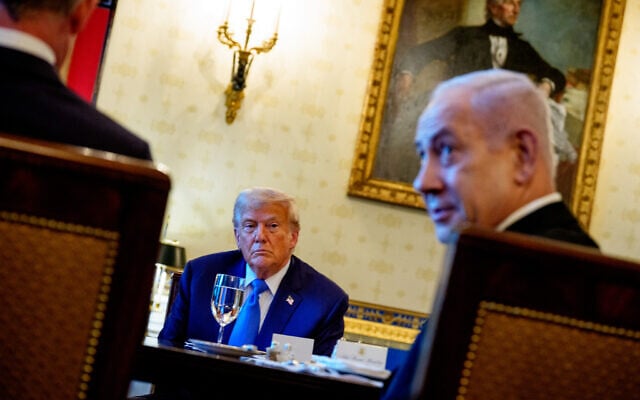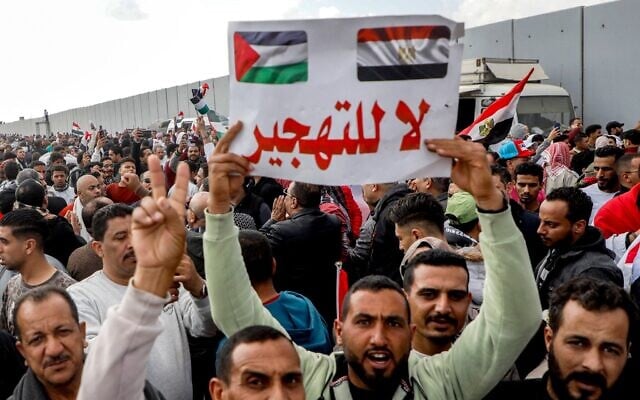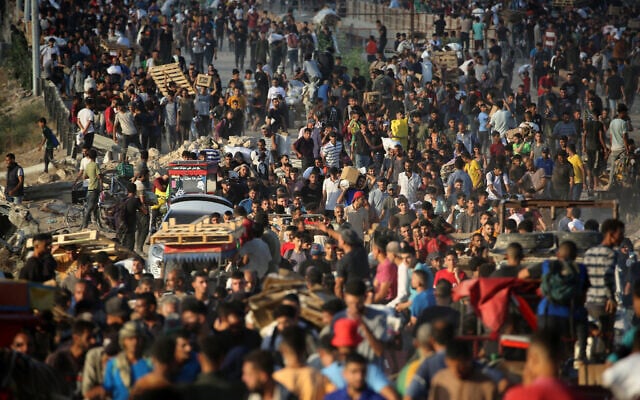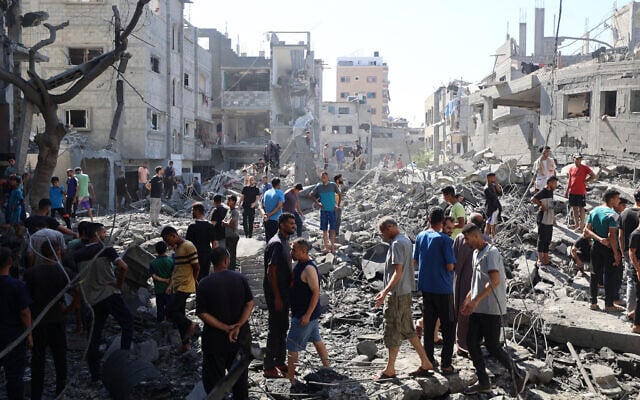


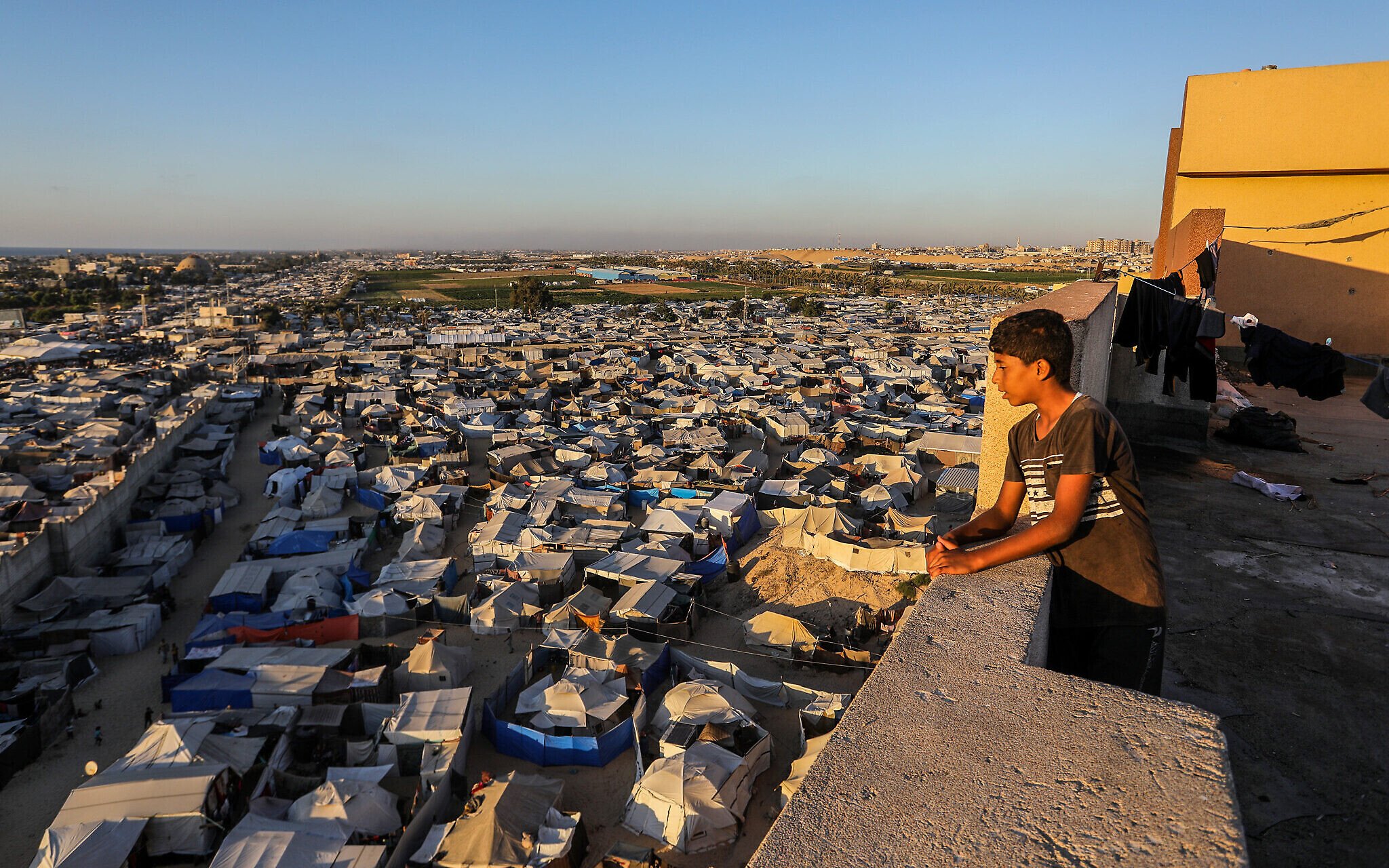
Whenever Mansour Abu Al-Khaier stares across Gaza, all the 45-year-old Palestinian man sees is death and destruction in the tiny enclave after nearly two years of war between Hamas and Israel.
But even though Palestinian lives have been shattered during the course of Israeli airstrikes and heavy bombardment, Al-Khaier and others flatly reject US President Donald Trump’s Israeli-backed plan to displace Gaza’s 2.3 million population.
“This is our land. Who would we leave it to, where would we go?” asked Al-Khaier, a technician.
Trump, hosting Prime Minister Benjamin Netanyahu at the White House on Monday, indicated progress on a highly disputed initiative to relocate Palestinians out of the coastal enclave, citing “great cooperation from… surrounding countries.”
Speaking to reporters at the start of a dinner between US and Israeli officials, Netanyahu said the United States and Israel were working with other countries that would give Palestinians a “better future,” suggesting that Gazans would be able to move to neighboring nations.
In an exchange with Trump, Netanyahu said: “You know if people want to stay, they can stay. But if they want to leave they should be able to leave. It shouldn’t be a prison. It should be an open place and give people free choice.”
He added: “We’re working with the United States very closely about finding countries that will seek to realize what they always say, that they wanted to give the Palestinians a better future. I think we’re getting close to finding several countries.”
Asked about Netanyahu’s remarks, UN human rights spokesperson Ravina Shamdasani told a Geneva press briefing: “This raises concerns with regards to forcible transfer — the concept of voluntary transfers in the context that we are seeing in Gaza right now [is] very questionable.”
Five days after becoming US president in January, Trump said Jordan and Egypt should take in Palestinians from Gaza, while suggesting he was open to this being a long-term plan.
Cairo and Amman quickly rebuffed Trump’s idea to turn impoverished Gaza into the “Riviera of the Middle East,” and so did Palestinians and human rights groups who said the plan would amount to ethnic cleansing.
When asked this week about displacing Palestinians, Trump said the countries around Israel were helping out. “We’ve had great cooperation from… surrounding countries… So something good will happen,” Trump said.
Saed, a 27-year-old Gaza Palestinian, woke up troubled to the news that Trump and Netanyahu were once again floating the displacement idea.
“We have the right to leave of our own free will and visit other countries, but we reject the plan of displacement as Palestinians,” he said.
A proposal seen by Reuters and bearing the name of the controversial US- and Israeli-backed Gaza Humanitarian Foundation described a plan to further Trump’s “vision” for Gaza with “Humanitarian Transit Areas” inside — and possibly outside — the Strip to house the Palestinian population,
The plan, which GHF denied having promoted, outlined a framework for “replacing Hamas control over the population in Gaza.”
Gaza resident Abu Samir el-Fakaawi was not having any of it.
“I will not leave Gaza. This is my country,” he said. “Our children who were martyred in the war are buried here. Our families. Our friends. Our cousins. We are all buried here. Whether Trump or Netanyahu or anyone else likes it or not, we are staying on this land.”
The war in Gaza was sparked on October 7, 2023, when thousands of Hamas-led terrorists stormed southern Israel to kill more than 1,200 people and take 251 hostages.
According to Gaza’s Hamas-run health ministry, Israel’s retaliatory offensive has killed more than 57,000 people in the Strip. The toll, which cannot be independently verified, does not distinguish between civilians and combatants.
Israel says it has killed some 20,000 combatants in battle as of January and another 1,600 terrorists inside Israel during the October 7 onslaught.
Some Palestinians who have faced relentless Israeli airstrikes and severe shortages of food, fuel, medicine and water are looking for a way out, according to findings by the Palestinian Center for Policy and Survey Research, which is based in Ramallah and funded by Western donors.
The think tank reported in May that almost half of Gaza’s population was willing to apply to Israel to help them leave for other countries.

